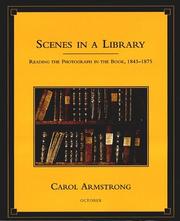| Listing 1 - 2 of 2 |
Sort by
|
Book
ISBN: 0892360887 Year: 1986 Publisher: Malibu Getty museum
Abstract | Keywords | Export | Availability | Bookmark
 Loading...
Loading...Choose an application
- Reference Manager
- EndNote
- RefWorks (Direct export to RefWorks)
779 --- 77 CAMERON, JULIA MARGARET --- 77 "18" --- Portrait photography --- -Photograph collections --- -Collections of photographs --- Photographs --- Photography --- Portraiture --- Fotografie--Fotoverzamelingen. Collecties --- Fotografie--CAMERON, JULIA MARGARET --- Fotografie--19e eeuw. Periode 1800-1899 --- Exhibitions --- Catalogs --- Private collections --- Portraits --- Cameron, Julia Margaret Pattle --- -Exhibitions --- J. Paul Getty Museum --- -Getty (J. Paul) Museum. --- Getty Museum --- JPGM --- Museo J. Paul Getty --- Photograph collections --- -Fotografie--Fotoverzamelingen. Collecties --- 77 "18" Fotografie--19e eeuw. Periode 1800-1899 --- 77 CAMERON, JULIA MARGARET Fotografie--CAMERON, JULIA MARGARET --- 779 Fotografie--Fotoverzamelingen. Collecties --- Collections of photographs --- Cameron, Julia Margaret, --- Cameron, Julia M. --- Cameron, Julia Margaret Pattle, --- Exhibitions. --- Getty (J. Paul) Museum.

ISBN: 026229169X 0262267322 0585278571 9780585278575 0262011697 9780262291699 9780262267328 9780262011693 Year: 1998 Publisher: Cambridge (Mass.) MIT press
Abstract | Keywords | Export | Availability | Bookmark
 Loading...
Loading...Choose an application
- Reference Manager
- EndNote
- RefWorks (Direct export to RefWorks)
At the end of the 20th century we are accustomed to seeing photographs wedded to text - whether in the family album of daily newspaper - where the verbal framing of the photograph has become invisible. This text is internalized within the image, and the meaning of the photograph itself. It explores the experimental moment, at the inception of the new medium, when the word came to haunt photographic image, and the forty or so years during which the photographic image alternately resisted and became assimilited to the printed page. The author's emphasis is on British books. Not only was it in an English book that the paper photograph was first described and published, but the range of subject matter of 19th-century British photographically illustrated books prior to the 1880s was as rich as it was peculiar and sometimes recalcitrant. Carol Armstrong focuses on one book about photography (Talbot's "The Pencil of Nature"); one "scientific" book (Anna Atkins' "Photographs of British Algae"); two travel narrative, one factual and one fictional (Francis Firth's "Egypt and Palestine Photographed and Observed", and his illustrated edition of Longfellow's novel "Hyperion: A Romance"); and one book of poetry (Julia Margaret Cameron's "Illustrations to Alfred Lord Tennyson's Idylls of the King); as well as some miscellaneous books from the 1870s. According to Armstrong, art history has tended to remove the historic photograph from its printed and published context. Moving back and forth between close looking and equally close reading, she aims to reinsert the photograph into the book from which it was taken.
Images, Photographic --- Photography --- Illustrated books --- Visual Arts --- Art, Architecture & Applied Arts --- Photographic images --- Image processing --- Imaging systems --- Optical images --- History --- 655.533 --- 77.01 --- 77 "18" --- 77 ATKINS, ANNA --- 77 CAMERON, JULIA MARGARET --- 77 FRITH, FRANCIS --- 77 TALBOT, WILLIAM HENRY FOX --- 77 FRITH, FRANCIS Fotografie--FRITH, FRANCIS --- Fotografie--FRITH, FRANCIS --- 77 CAMERON, JULIA MARGARET Fotografie--CAMERON, JULIA MARGARET --- Fotografie--CAMERON, JULIA MARGARET --- 77 TALBOT, WILLIAM HENRY FOX Fotografie--TALBOT, WILLIAM HENRY FOX --- Fotografie--TALBOT, WILLIAM HENRY FOX --- 77 "18" Fotografie--19e eeuw. Periode 1800-1899 --- Fotografie--19e eeuw. Periode 1800-1899 --- 77.01 Fotografie--Semiotiek van de fotografie. Theorie --- Fotografie--Semiotiek van de fotografie. Theorie --- Boekillustratie --- Fotografie--ATKINS, ANNA --- Book history --- anno 1800-1899 --- 77.035 --- CDL
| Listing 1 - 2 of 2 |
Sort by
|

 Search
Search Feedback
Feedback About UniCat
About UniCat  Help
Help News
News